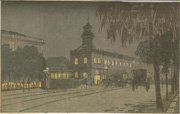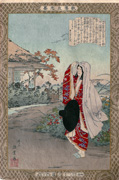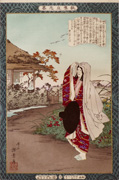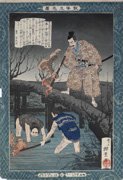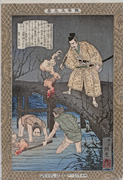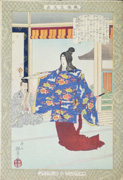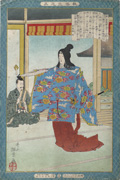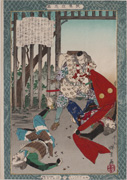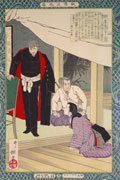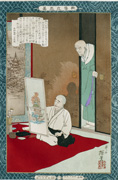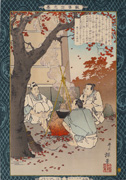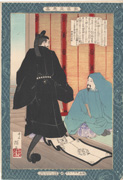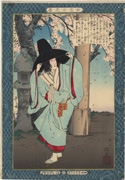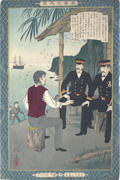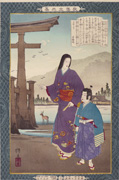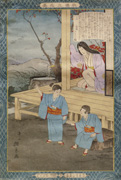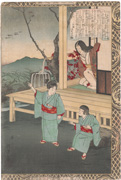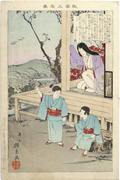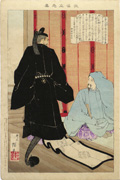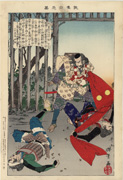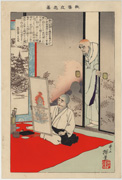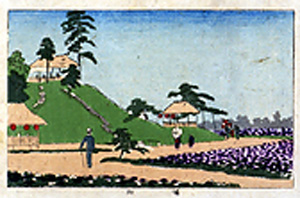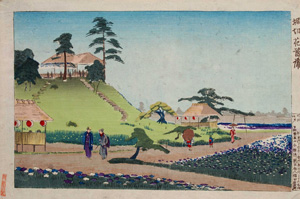Prints in Collection
| Night View of Ginza Dorii from the series True Pictures of Famous Places of Tokyo, c. 1884-1889 IHL Cat. #588 |
| | | | |
| | Dainagon Yukinari from the series Instructive Models of Lofty Ambition, 1886 IHL Cat. #1402 | Akazome Emon from the series Instructive Models of Lofty Ambition, September 1886 IHL Cat. #1295 |
Biographical Data
Biography
Inoue Yasuji 井上安治 (1864-1889) [aka Inoue Tankei
井上
探景]Sources: Kiyochika: Artist of Meiji Japan, Henry D. Smith II, Santa Barbara Museum of Art, 1988, p.14 and International Fine Print Dealers Association website http://www.ifpda.org/content/node/1126
安二
Yasuji (seen written as 安治, 安二 and 安治1 and also known as Yasujirō 安治郎, his given name at birth) was Kobayashi Kiyochika's (1847-1915) only true disciple. He was born in 1864 as the son of a dry-goods merchant in Asakusa, and is said to have begun as an apprentice in the atelier of the famous print artist Tsukioka Yoshitoshi (1839-1892). The story goes that Yasuji encountered Kiyochika one snowy day – probably in the winter of 1878-79 – sketching a Sumida River landscape. After watching the artist for some two hours in silence, Yasuji struck up a conversation and in short order asked Kiyochika to take him on as a disciple.
By the time Kiyochika gave up Western-style landscapes in 1881, Yasuji had designed only eight prints in his own name, but he perpetuated his master’s style over the next three years, particularly in the format of small postcard-size prints, reaching a total of 134 by 1884, with his best known series of small prints being titled Tokyo meisho (Famous Views of Tokyo). He also created prints that were nearly identical to those of Kiyochika’s as in the example below.
Like his master, Yasuji would produce several versions of the same print, for instance, one at daylight and one at night. Yasuji’s landscape work has a greater clarity than that of his teacher, and tends to be less dramatic or sentimental. In 1884, however, he completely abandoned this style and turned to conventional nishiki-e triptychs depicting the sights and events of the day in the traditional heroic style, working under the name of Tankei 探景, which the publisher Matsuki Heikichi bestowed on him in 1884. His death1 on September 14, 1889, at the age of twenty-five, is said to have greatly distressed Kiyochika.
Roberts, in his Dictionary of Japanese Artists, comments: "Had he not died so young, [he] might have revived the ukiyo-e school."2
1 also read Yasuharu
2 I have read in a blog that his death was caused by heart failure.
3 A Dictionary of Japanese Artists: Painting, Sculpture, Ceramics, Prints, Lacquer, Laurance P. Roberts, Weatherhill, 1976, p. 198.
A retrospective of his work was recently held at the Tokyo Gas Museum.
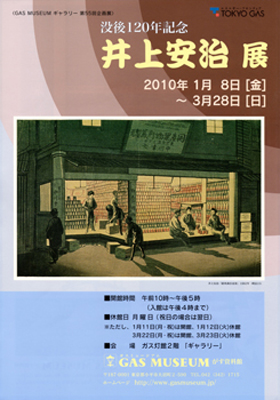
Artist's Signatures
Notes: sha 冩 drawn or sketched; ga 画 drawn by; hitsu/fude 筆 brush of; gakō 画工 or 畫工 designed by; ōju 應需 by request
 井上探景画 1888 |  井上探景冩 with Tankei seal 探景,1887 |  |  |  1888 |
 with unread seal, 1888 |  |  Inoue Tankei ga 井上探景画 with Tankei 探景 seal, 1886 |  井上探景画 with Tankei seal, 1885 |  井上探景画, 1885 |
